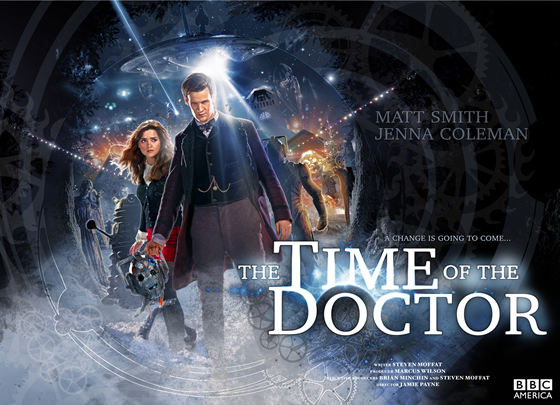Community Post: This article was submitted by a member of our community. Find out how you can publish your own writing here!
For most of us, our experience with extraterrestrial beings is limited to the films we watch. Whether it’s in the form of a friendly buddy alien like in E.T. or the more dangerous, murder-obsessed stereotype – as is the case with Ridley Scott’s Alien franchise – the appearance and temperament of aliens in film is as varied as those of the human characters.
As is the case with several aspects of a film’s narrative, there are things any viewer can learn from alien encounters in film. Some films provide relatively subtle political commentary masked as sci-fi fun. Others may comment on societal issues by depicting a societal reaction to an impending invasion or arrival. What’s for sure is that alien encounters in film have quite a colorful history.
Early Alien Films and Hostile Military Fears
The alien films of the ‘40s and ‘50s were produced during a time where the public feared a military invasion, to the point where some would need counseling and therapy. With World War II just ending, in addition to the prospect of World War III with Russia, several alien-related films during this time captured the feel of militaristic war-based fears, such as an opposing army invading a town.
Two 1951 films, The Man From Planet X and The Day the Earth Stood Still, depict initially peaceful aliens whose violent tendencies come out after being exposed to human evils, such as the scientist attacking the extraterrestrial in The Man From Planet X. This plot provides indication of an increasingly popular perception among western audiences regarding humankind’s latent evil, a pessimism derived from wartime horrors. Both films essentially inform the audience that, if an alien species were to arrive, they may not be villainous at all – until humankind shows its true colors through segregation and a willingness to wage war, which was displayed fully off-screen at the time.
Violent Aliens Hit the Big Screen
Whereas some of the earliest science fiction films depicted aliens as initially peaceful, before humankind’s latent evil transforms their temperaments for the worse, later films would depict alien beings as downright bloodthirsty. Eventually, by the time The War of the Worlds was released in 1953, cut-and-dry violent aliens were the more popular presentation.
Without question, the aliens in films such as The War of the Worlds and It Came from Outer Spacewere emotionally void and relatively animalistic in appearance, showing no sympathy in kidnapping humans and taking over cities. Although H.G. Wells’ original novel version of The War of the Worldswas an allegorical representation of the British Empire’s horrific foreign policy, the film presented warlike conditions where the aliens’ intentions were secondary to their ruthless and villainous presentation.
Us vs. Them: A Mentality Made More Prevalent by Wartime
The transition in the ‘50s from more sympathetic and cognitive aliens to ruthless villainous invaders was likely a result of both wartime fears and nationalistic urges, specifically in the “us vs. them” mentality that was increasingly present throughout the world after the Second World War subsided and whispers of the Cold War began.
It’s no surprise that the paranoia brought on from war resulted in an increase of alien sightings in the late ‘40s and early ‘50s, which filmmakers certainly used to their advantage to attract viewers with an emotional appeal. Depicting villainous aliens, rather than understanding ones, aligned more naturally with what viewers were expecting after just having witnessed a bloody war.
From the ‘60s to Today: Funny, Friendly, and Evil Aliens
After wartime paranoia resulted in many of the aliens of the ‘40s and ‘50s being depicted as villainous ciphers, the decades that followed were more eclectic in their representation. It even took on a comedic tone, sometimes unintentionally, with cheesy sci-fi films like Ed Wood’s infamous Plan 9 from Outer Space and Philip Kaufman’s 1978 remake of Invasion of the Body Snatchers. Friendly aliens also began to appear in film, the most popular being Steven Spielberg’s E.T. The Seth Rogen-voiced alien inPaul and Kevin Spacey’s K-PAX character are other friendly aliens of note.
Of course, the traditional “us vs. them” aliens continue to be depicted, whether it’s Spielberg’s 2005 adaptation of War of the Worlds, or action-packed spectacles like Battle: Los Angeles, Aliens vs Predator and Cloverfield. Today, alien appearances in film are very eclectic, continuing to serve as a source of entertainment that now relies on filmmakers’ imaginative, and definitely varied, interpretations of extraterrestrial races.
Looking back at the history of aliens in film provides knowledge relating to worldwide paranoia, political perception, and cultural values at the time of an alien film’s release. In fact, one could argue that alien movies aren’t about the aliens at all, but about what they reveal and awaken inside the audience.
–
Image credit: JD Hancock
Community Post: This article was submitted by a member of our community. The views expressed are the opinions of the designated author, and do not reflect the opinions of the Overmental as a whole or any other individual. We will gladly cooperate in the removal of plagiarism or any copyright infringement. Please contact us here.




